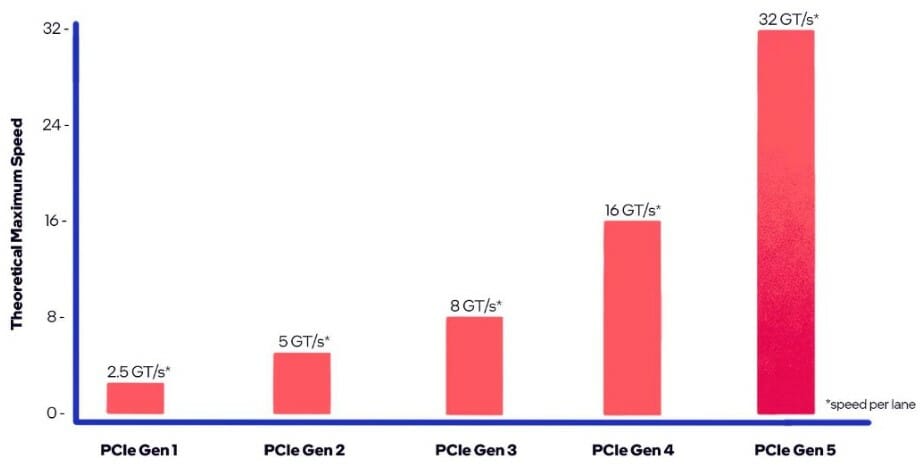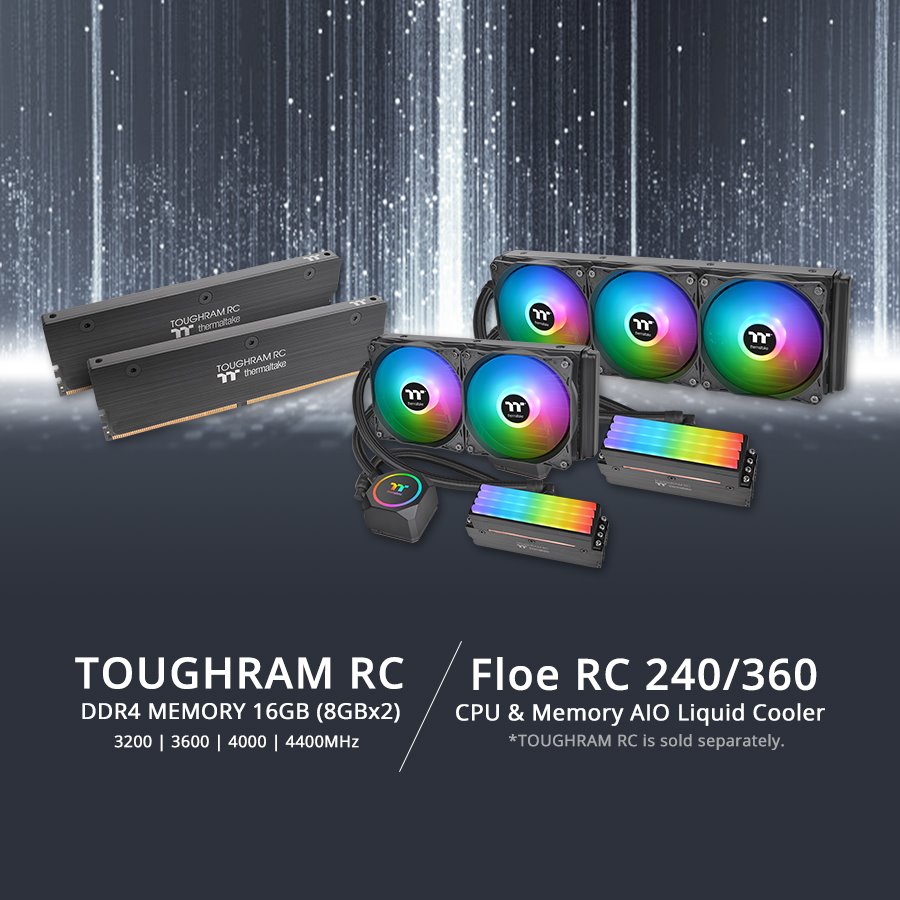With some of the latest releases of CPUs from AMD and Intel, we are now seeing something called PCIe 5.0. For those who don’t know, PCIe lanes help your CPU communicate with your graphics card and even some SSDs. Simply put, the faster this communication is done, the better your performance will be. PCIe 5.0 is going to allow for bandwidth of up to 128GB/s and transfer speeds of 32GT/s over an x16 PCIe configuration. Not only does this allow for faster drives and GPUs, it also means that GPUs will be able to use fewer PCIe lanes as they have higher bandwidth. This then also equates to more free PCIe lanes for NVMe SSDs etc.
Image Source: Intel.co.uk
PCIe 5.0 doubles the bandwidth, and frequency of what PCIe 4.0 had to offer. Pushing its Maximum Speed from 16GT/s on PCIe 4.0 up to a massive 32GT/s on the new PCIe.5.0 This will allow for faster transfer speeds which will equate to better overall performance for the end user. I am sure we can all appreciate that when it comes to PCs in general, the faster a component is, the better the performance it will be able to offer.
- Faster Transfer Speeds – Allowing for faster transfer speeds is going to allow manufacturers to push the limits of storage speeds as we know them. We will see much faster drives than ever before. This means that users will be able to access and transfer their files more quickly. It will also allow GPUs to offer better performance so you will get better frame rates in-game and quicker rendering of video files.
- Higher Bandwidth – Having higher bandwidth per lane means fewer lanes are needed overall for a single component. GPUs can now access their full performance VIA fewer lanes which also means you will have more lanes for other devices. GPUs used to be what would take up most of your lanes, leaving very few lanes for PCIe-based SSDs. CPUs are what limit how many PCIe lanes are available and the more performance or bandwidth each lane can offer the better. This also means that we will start to see motherboards with more PCIe-based M.2 slots offering more room for storage devices and better performance. Higher bandwidth also means there are fewer chances of signals being interrupted or broken.
- Future Proofing – While there are not too many current components that can make use of all that PCIe 5.0 offers, there soon will be. Having a computer that supports PCIe 5.0 may mean in the future you only need to upgrade your GPU and storage drives, rather than having to upgrade the whole PC. Future-proofing your PC is important and you really need to think of how long you plan on having it as not everyone wants to upgrade every time a new product is released. Figuring out it spending the extra money now VS later can be hard, but there is no doubt that it is worth it overall.
PCIe 5.0 is one of the latest advancements in personal computer technology. It is offering unprecedented speeds for both storage drives and graphics cards. On the graphics card side of things, this will allow games to perform better and will even make video rendering a much quicker process. As for storage, it will allow you to write bigger files quicker and transfer them faster than before. Allowing for faster rendering and bigger file sizes quicker means that we can use higher-resolution output devices such as televisions and monitors. With better performance comes better clarity, fewer interruptions, and a much better user experience.
While PCIe 5.0 is still very new, expect it to become the standard soon enough. As mentioned, it offers twice the bandwidth or PCIe 4.0 which means faster components and more of them can be used at the same time. It will take a few years before this becomes the norm, but for now, it is great to know what is on the way. If this is a sign of things to come, we expect to see PC Gamers gaming on 8K resolution screens and running 144+ FPS in their favorite games. While we may still be a little ways away from that, there is no denying that it is now at least on the horizon.
While PCIe 5.0 is still pretty hot off the press, there are already discussions on what PCIe 6.0 will have to over in the next few years! As they say, PCI bandwidth pretty much doubles every 3-years so in 2025 we should see another massive jump in PCIe speeds!
















